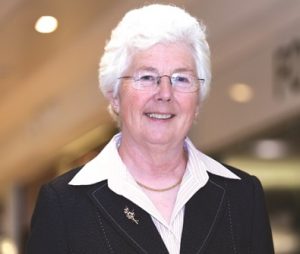Drax’s confidence not dented

A SECOND member of the management team that helped turn Drax into a financial power house has announced he is to leave the company.
Gordon Boyd, Drax's finance director, will leave the firm during the second half of 2008 to “pursue other opportunities”.
His departure follows chairman Gordon Horsfield's announcement in December that he too had decided to move on. Both joined Drax in January 2005 and are largely regarded as being responsible for the power company's remarkable turnaround together with chief executive Dorothy Thompson.
“I have thought long and hard about this decision and I am convinced that it is
the right time for me to move on and seek fresh challenges,” said Mr Boyd in a statement.
“I wish my colleagues at Drax all the best for the future and hope that the business continues to go from strength to strength.'”
The news comes on a day when the Selby-based firm, which runs Britain's largest coal-fired power station, announced a 16% fall in year-on-year profits, which it blamed on high coal prices and weak electricity demand thanks to last year's warm winter.
The company, which floated in the stock market a little over two years ago, reported underlying pre-tax profits of £439m for the 12 months ended December 31 – a fall from £524m the year before.
Revenue fell from £1.387m to £1.247 with operating profits dipping considerably from £658m to £471m.
However, the firm said despite being affected by dramatic price changes across commodity markets that are critical to its performance, and a coal price increase of 90%, its business remained on track.
“Our strategy is to grow shareholder value by exploiting the strategic and commercial value of Drax power station and by deploying and developing our core competencies to deliver additional value through fuel diversification and carbon emissions reduction,” it said.
“In 2007, we made good progress with our two major investment programmes to upgrade the high and low pressure turbines of all six generating units and significantly increase our renewable biomass throughput, both importantly contributing to our commitment to reduce carbon dioxide emissions and helping to combat climate change.”
Plant reliability was also comparable with its peers the company added as was its health and safety record despite a fatality at the site last year of a contractor.
“We believe developments in the UK electricity market will present opportunities for Drax to exploit its strategic position as a key generator in the market,” said Dorothy Thompson, Drax's chief executive.
Drax has been through several hands since being built by the Central Electricity Generating Board.
It was transferred to National Power at privatisation in 1990 which sold it to AES of the US for £1.86bn in 1998. AES quit the UK in 2003 leaving Drax in the hands of its lending banks.
Today it is the largest, cleanest and most efficient coal fired power station in the UK. The output capacity from the station's six generators is 4,000MW. At current output levels it supplies some 7% of the UK's electricity needs.
Last year it announced that a trial burning a blend of coal and petcoke had been a success.
Drax said that the two year trial, conducted at Drax Power Station, demonstrated no detectable impact of the local environment and supported the case for the use of the alternative fuel.






